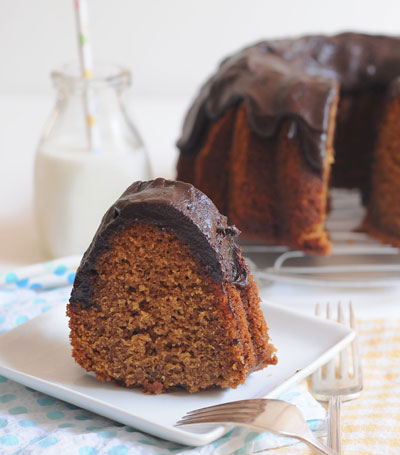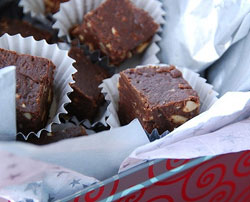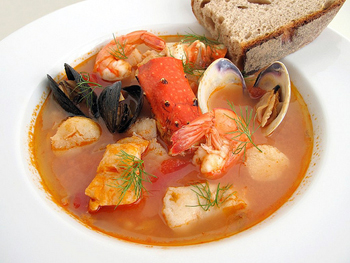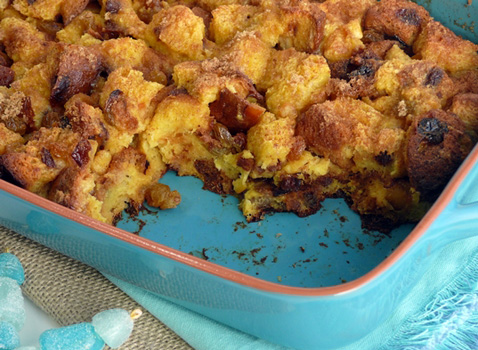 My favorite part about Thanksgiving is always the desserts. Pumpkin pie and pecan pie are my favorites, but squash pie is my personal specialty. But all the Thanksgiving pies are very much American specialties. You can't really find pie as popular anywhere else in the world. The first Americans, the pilgrims, who celebrated the holiday did not automatically think to make pies out of the land's native squashes and pumpkins. They were more apt to eat meat pies for a main dish and custards for dessert as was the tradition in Europe, but because of scarcity, they had to use the plentiful crops for something. Some bright individual combined pumpkins, pie, and custard and came up with the basics for the recipes we follow today. I sincerely thank that individual.
My favorite part about Thanksgiving is always the desserts. Pumpkin pie and pecan pie are my favorites, but squash pie is my personal specialty. But all the Thanksgiving pies are very much American specialties. You can't really find pie as popular anywhere else in the world. The first Americans, the pilgrims, who celebrated the holiday did not automatically think to make pies out of the land's native squashes and pumpkins. They were more apt to eat meat pies for a main dish and custards for dessert as was the tradition in Europe, but because of scarcity, they had to use the plentiful crops for something. Some bright individual combined pumpkins, pie, and custard and came up with the basics for the recipes we follow today. I sincerely thank that individual.
There's just something special about fall and winter squashes, their unique shapes and earthy flavors, that makes me want to cook and bake with them. Since I prefer the more mellow flavor of squash to pumpkin, I use acorn or butternut squash. Sometimes I steam or roast them for this recipe, but canned squash or pumpkin works perfectly well. Since it's synonymous with the holiday, it's the only time I use a can all year. This recipe is very quick and easy. The squash custard is whipped in one bowl. A machine isn't even required. So, do not buy a pumpkin pie from the bakery or frozen section of the grocery store. And whatever you do, don't buy frozen pie crust either. This pie with its cornmeal crust is much more unique than anything available in stores. Serve with a dollop of fresh whipped cream and your guests will be delightedly pleased with Thanksgiving dessert.
 Fall always symbolizes new beginnings; fresh school supplies, cozy scarves, and the celebration of the Jewish New Year.
Fall always symbolizes new beginnings; fresh school supplies, cozy scarves, and the celebration of the Jewish New Year.
 Still looking for the perfect Christmas gift that is easy, inexpensive, and loved by all?
Still looking for the perfect Christmas gift that is easy, inexpensive, and loved by all? My favorite part about Thanksgiving is always the desserts. Pumpkin pie and pecan pie are my favorites, but squash pie is my personal specialty. But all the Thanksgiving pies are very much American specialties. You can't really find pie as popular anywhere else in the world. The first Americans, the pilgrims, who celebrated the holiday did not automatically think to make pies out of the land's native squashes and pumpkins. They were more apt to eat meat pies for a main dish and custards for dessert as was the tradition in Europe, but because of scarcity, they had to use the plentiful crops for something. Some bright individual combined pumpkins, pie, and custard and came up with the basics for the recipes we follow today. I sincerely thank that individual.
My favorite part about Thanksgiving is always the desserts. Pumpkin pie and pecan pie are my favorites, but squash pie is my personal specialty. But all the Thanksgiving pies are very much American specialties. You can't really find pie as popular anywhere else in the world. The first Americans, the pilgrims, who celebrated the holiday did not automatically think to make pies out of the land's native squashes and pumpkins. They were more apt to eat meat pies for a main dish and custards for dessert as was the tradition in Europe, but because of scarcity, they had to use the plentiful crops for something. Some bright individual combined pumpkins, pie, and custard and came up with the basics for the recipes we follow today. I sincerely thank that individual. In many European cultures, it's tradition to eat seafood on Christmas Eve. My family's Hungarian traditions always had us eating some sort of fried fish or stew. Italians particularly hold this tradition to the
extreme, eating anywhere from 7 to 13 different types of seafood dishes
for dinner. It's called the Feast of the Seven Fishes. The odd numbers
have symbolic meaning in both Catholicism and numerology. Seven
represents the seven sacraments—and sins. In numerology, seven
represents perfection. I find that seafood stews are some of the most
hearty and satisfying of all the fish dishes. One seafood stew that I
find most special is Cioppino, a true Italian-American invention.
In many European cultures, it's tradition to eat seafood on Christmas Eve. My family's Hungarian traditions always had us eating some sort of fried fish or stew. Italians particularly hold this tradition to the
extreme, eating anywhere from 7 to 13 different types of seafood dishes
for dinner. It's called the Feast of the Seven Fishes. The odd numbers
have symbolic meaning in both Catholicism and numerology. Seven
represents the seven sacraments—and sins. In numerology, seven
represents perfection. I find that seafood stews are some of the most
hearty and satisfying of all the fish dishes. One seafood stew that I
find most special is Cioppino, a true Italian-American invention. Is everyone familiar with panettone, a sweet, Italian bread loaf, full of candied orange peel and raisins? It comes in a very tall, lofty box we only see at holiday time.
Is everyone familiar with panettone, a sweet, Italian bread loaf, full of candied orange peel and raisins? It comes in a very tall, lofty box we only see at holiday time. 